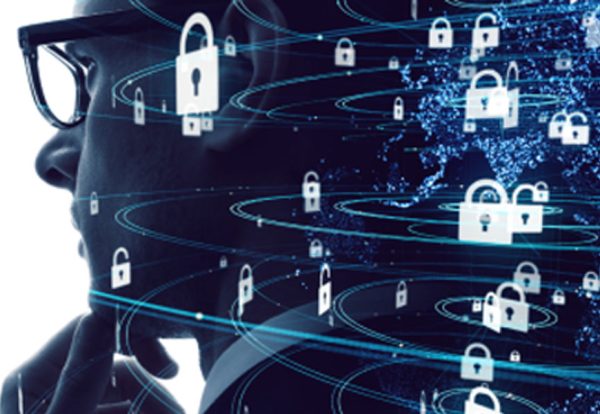What Does it Mean to Invest in Cybersecurity in 2023?
Over the past two decades, we’ve undergone a rapid global push to digitise information. The outcome, in purely economic terms, has undoubtedly proved beneficial. The World Economic Forum reports that almost 60 percent of the world’s global GDP has become reliant on digital communication.
But now, we must cope with a consequence of this information digitisation: its protection. Technological advancements rapidly create new digital systems, and hackers quickly respond by exploiting their vulnerabilities.
A leading group in the cybercrime industry estimates that the global cost of cybercrime was $3 trillion in 2015, $6 trillion in 2022, and will surpass $10.5 trillion in 2025. In India alone, cybercrime losses are estimated to be more than $20 billion a year.
Countering these threats requires a sophisticated effort in the form of cybersecurity.
So, moving into 2023, we must invest in cybersecurity to navigate this storm. Our conviction needs to stay firm, and we must act fast. But first, we must ask ourselves, what does it essentially mean to invest in cybersecurity?
In today’s blog, we highlight 3 key aspects: People, Processes, and Software.
Investment # 1 – People
Behind every cyberattack is a human who sees digital systems in a manner unthought of, even by its creator. By making a unique observation about how the system fundamentally works, the human is able to exploit it.
People possess the skill to consistently make unique observations about such systems and infiltrate them. Add to this the inherent nature of cyber systems: they can be accessed by anyone anywhere in the world.
To stop people trying to hack into cyber systems will require an investment in people who can protect them.
Such investments must factor in two important aspects. These are:
1. Invest in Talent
Systems that exist on the internet are at an inherent risk of being targeted by hackers worldwide. Organisations that underestimate the capabilities of hackers are undoubtedly opening themselves up to potential vulnerabilities.
The right path forward is to invest in talent that can build well-protected systems. More importantly, they’re able to think better and stay one step ahead than the attackers. The more capable your cybersecurity team is, the better your ability to spot vulnerabilities long before your system can be compromised.
2.Train Your Workforce
Even the most well-protected and safeguarded organizations can be compromised by people. When attackers realize they can’t directly hack into the system, they use social engineering tactics to hack humans. How?
The perpetrators realize that employees possess access to the company’s sensitive information. After identifying employees with the required credentials, they look to take advantage of their limited cybersecurity knowledge.
By using hacking techniques such as ransomware or phishing, they get the employee to make a mistake. This could be getting them to click on a fake company email where they unknowingly enter their credentials or by simply clicking on a link that silently installs malware into the system.
To prevent this, companies need to act quickly and invest in cybersecurity education for their workforce. By raising awareness of how hackers operate and how to respond in such situations, avoidable incidents can be drastically reduced.
Investment # 2 – Processes
Invest in processes. More importantly, invest in processes that stick with your employees and can be easily followed.
Processes, in the form of Standard Operating Procedures (SOPs) or related guidelines, will help your employees unify along a clear pathway. By ensuring your teams follow the required guidelines, you can significantly reduce cybersecurity threats.
Investing in processes can yield the following favourable outcomes:
1. Better incident response: Processes will help employees respond to cyber threats effectively by having a playbook to fall back to.
2. Preventing attacks before they happen: Having processes that employees stick to will close security gaps that hackers can exploit. If employees aren’t making any mistakes, and the system is well-protected, unfavourable incidents disappear.
But what do cybersecurity processes look like? Here are a few examples:
1. Guidelines for using company hardware: Guidelines such as shutting down your system when logging off, installing unauthorised software, using a secure password, remote work guidelines, communicating using company hardware, etc., are some important guidelines that can be defined within such a process.
2. Using contractor data: Your company can be used to gain access to a contractor’s data. Procedures such as creating a centralized access point and defining processes to use contractor data safely can ensure you’re not responsible for a contractor’s data leak.
3. E-mail guidelines: E-mail guidelines that highlight internal and external communication best practices, such as defining sensitive information sharing, can reduce data breaches.
4. Deleting company-owned data: Even processes that define how to dispose of data that are no longer needed should be well thought-out.
5. Permissions management: Processes that define a permissions hierarchy for who can access digital assets vs who can’t is crucial in preventing data breaches.
And these are just the tip of the iceberg. Well-thought-out processes that define all cyber-security aspects, such as the use of a company’s digital assets, incident response, etc., need to be ensured. Wondering how to do this? Anzen is there to help you!
Investment # 3 – Software
Think of it this way: If the walls that shield your organisation are penetrable, attackers will enter, leaving reliance on humans for protection. Investments in people need to be complemented with investments in software technology to protect against cybersecurity threats.
Industry group security.org reports that investments in software decrease the likelihood of being affected by breakthrough viruses and malware by 17%. For IT teams to be effective, they need software tools to protect them against lurking threats.
Research conducted using cyber defence exercises to evaluate team effectiveness concluded that besides team size and skill, the tools used to observe cybersecurity threats are critical in protecting against cyber threats. Investment in software is critical and will make all the difference against cyber threats.
Anzen: Avoidable Threats Meet Unavoidable Cyber-Security Fortress
Investing in cybersecurity is no longer a question of why but rather a question of when. The sooner you act and shield yourself against cyber threats that can emerge from anywhere in the world, the better off you’ll be.
At Anzen, we provide cybersecurity solutions for organizations like yours to build an impenetrable fortress. Our strategy and approach to cybersecurity ensures your investment bears fruit and your business remains secure against the most complex of cyber threats. Connect with us today and check out our special security services to see how your business can make the right investment.





